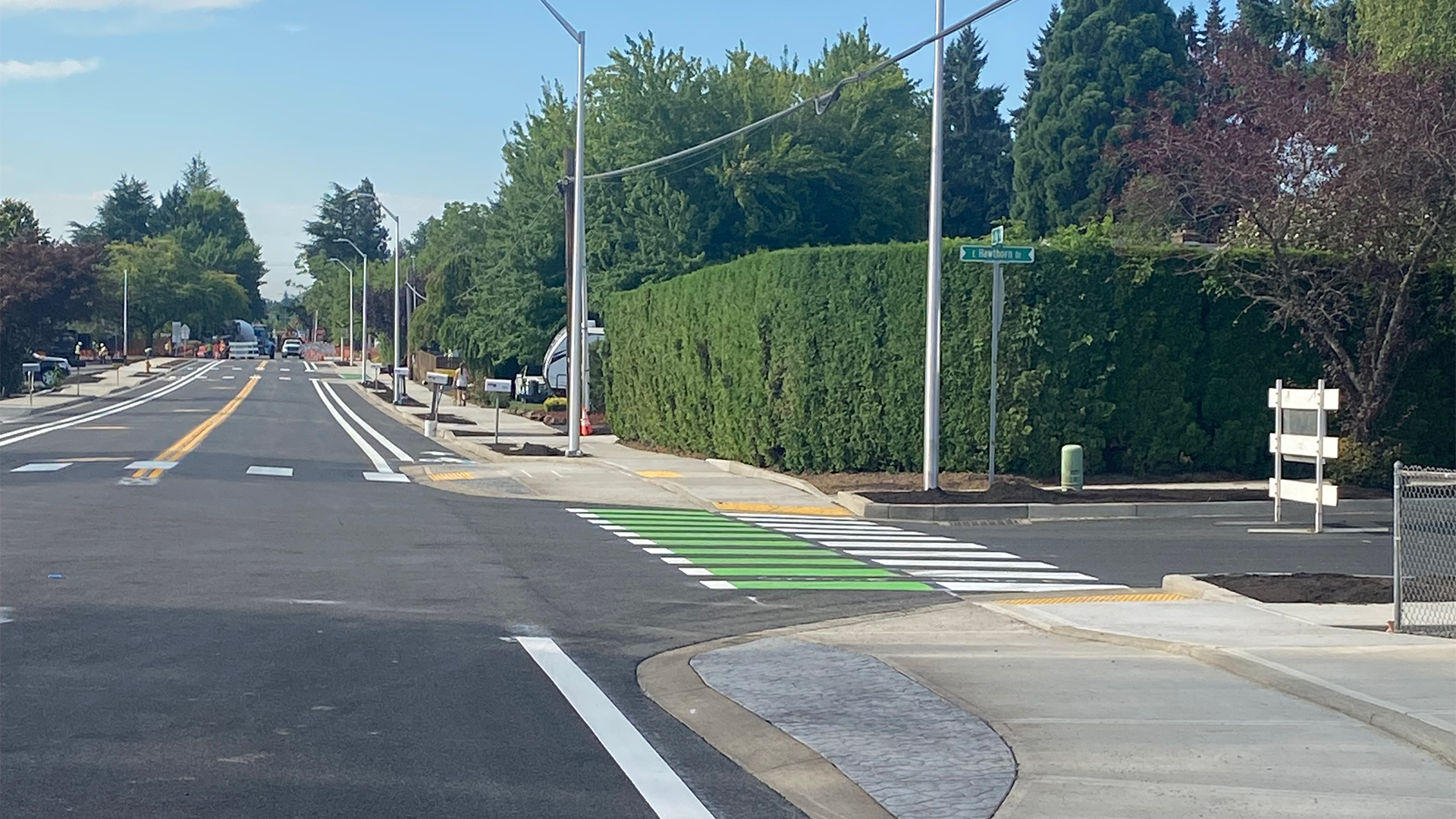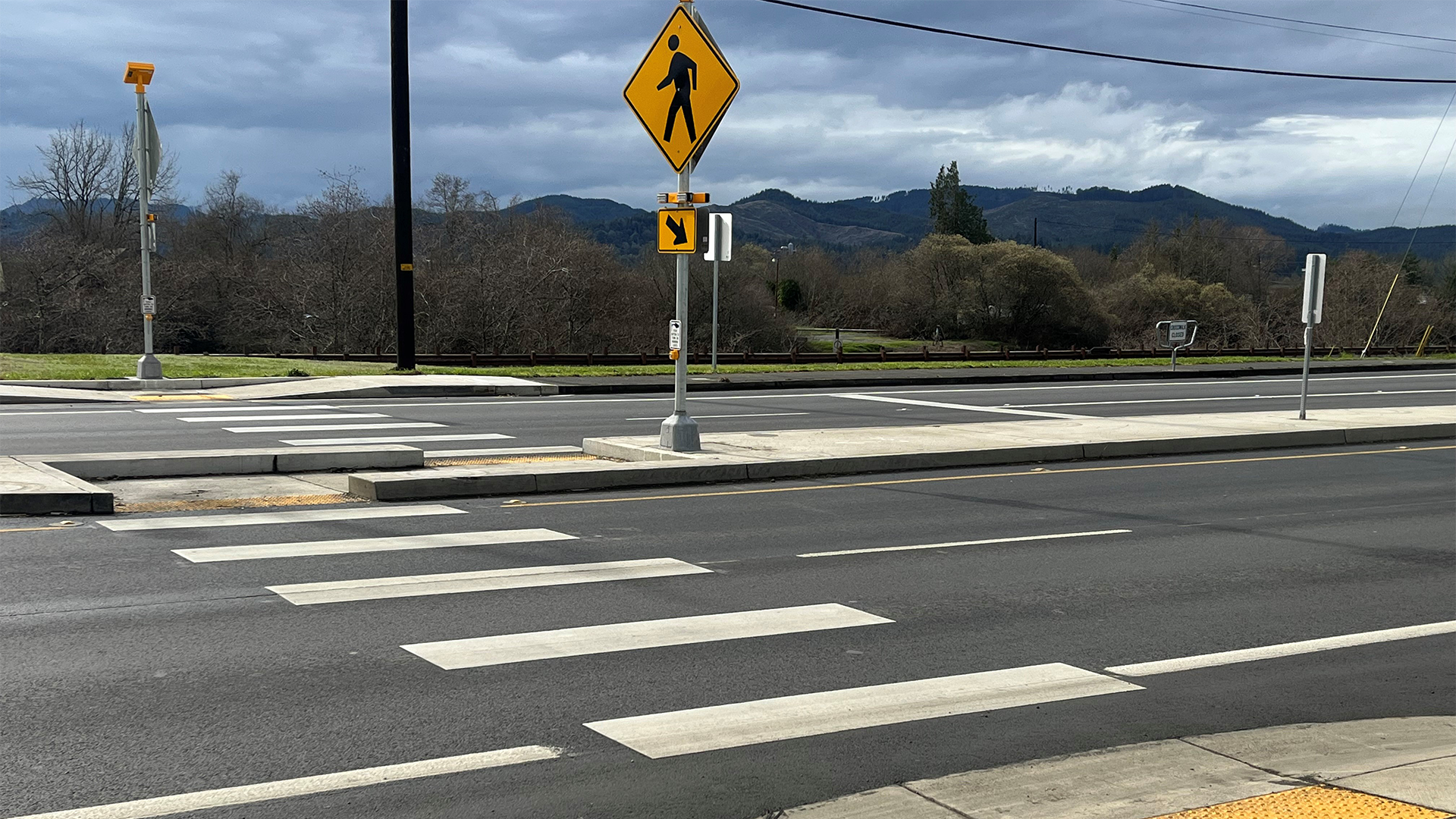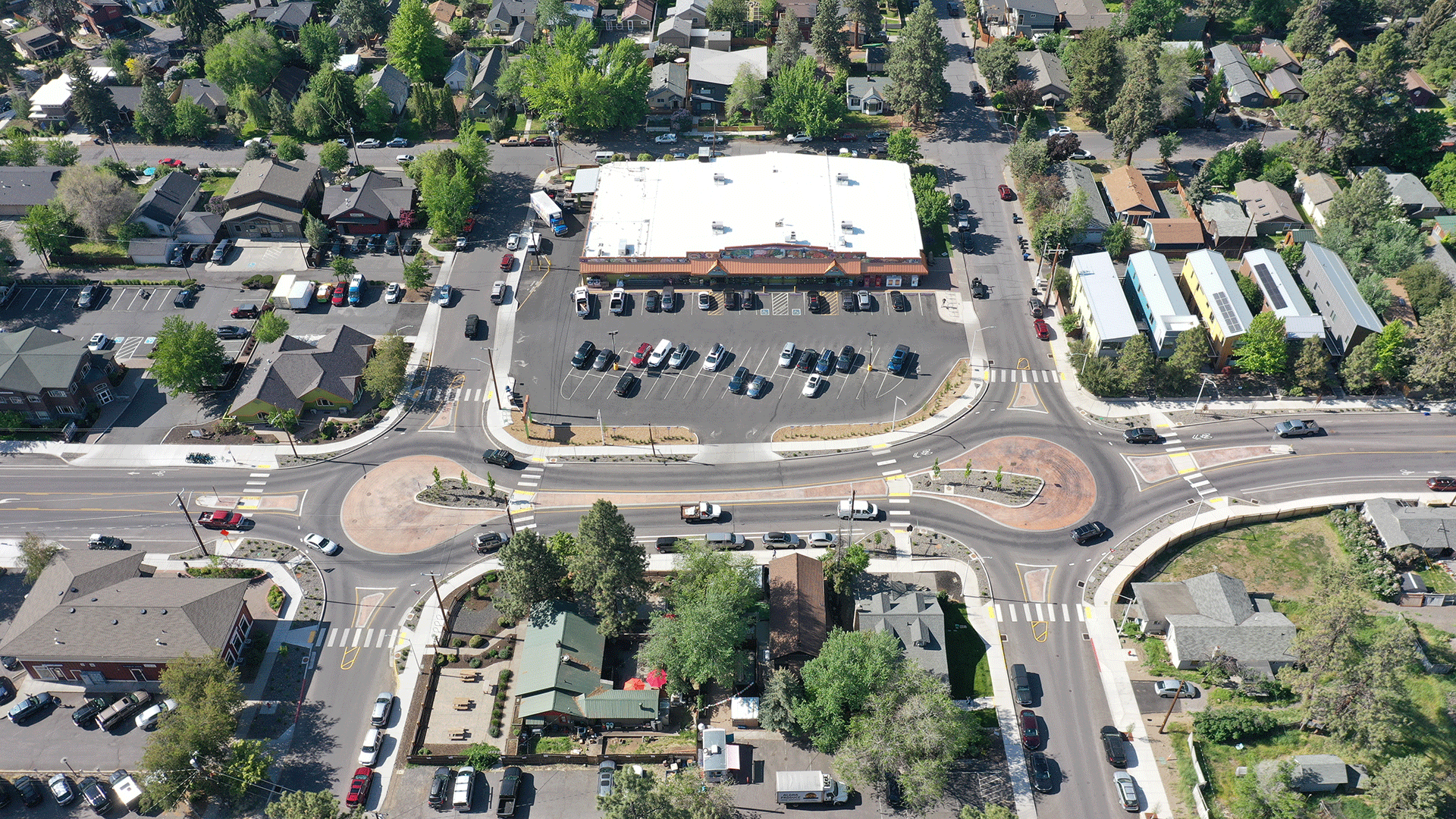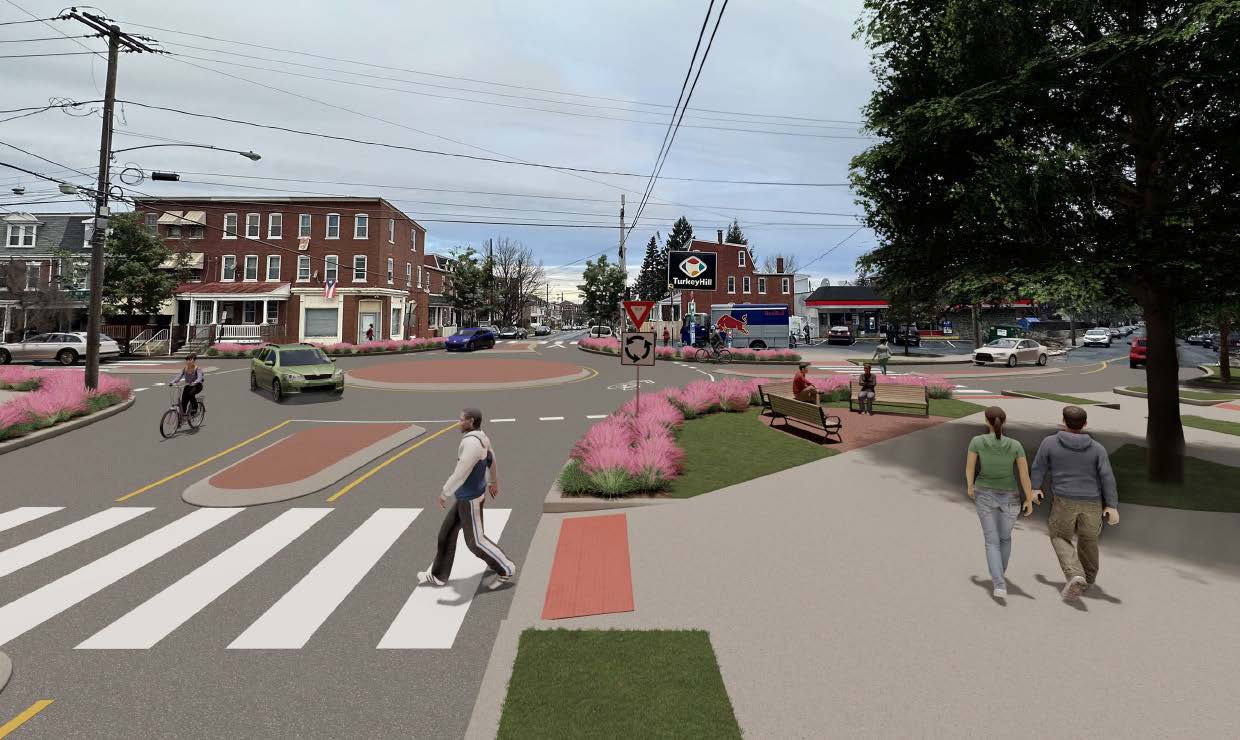May 20, 2024
We may not often think about storm drains, streetlights, or waste management in our everyday lives, but public works professionals and the work they do is vital to sustainable and resilient communities and to the public health, quality of life, and well-being of people everywhere. Public works is also a critical part of a transportation network that connects communities with safe, efficient, multimodal choices in sustainable ways, and that protects the physical environment of our neighborhoods.
National Public Works Week gives us a chance to celebrate the role of public works projects in our communities. The theme for Public Works Week 2024 is “Advancing Quality of Life for All,” showcasing how public works contributes to advancing and enhancing our quality of life, no matter where we live in the world.
In celebration of Public Works Week and recognition of our hardworking transportation practice, here are four projects that faced interesting public works challenges.
#1: Slowing Speeds on a “Racetrack Road”
Elliott Road: Newberg, OR
Elliott Road had long been identified as a high-priority improvement in the Newberg Transportation System Plan. This road, which connects State Highway 99W to Newberg High School, lacked a storm system and had minimal pedestrian and bicycle facilities, the pavement was failing, and a speed study showed that drivers were hitting 60mph through a residential area.
With no vertical or horizontal changes in the roadway, Elliott Road had a feel of a racetrack—not ideal conditions for student drivers! We studied multiple alignments for speed control and got creative with intersection treatments allowed by the City’s Transportation System Plan through implementing curb extensions at intersections for the visual narrowing of the roadway.
Working with the community was the heart of this project, and essential for the acquisition of right-of-way. We got to know the residents, their preferences and concerns. We met with residents, held open houses, and did neighborhood walkabouts to explain the design process, listen to concerns, and demystify the acquisition process to build project support. (We even solved one family’s yard flooding issue after identifying a buried catch basin in their backyard!)
The project also involved battling through some utility challenges. Early in construction, we got a call that an unmarked 1” power line had been destroyed by an excavator, taking out power in the entire north end of the project. The productivity rate of storm pipe installation dropped to 40 feet a day because they had to hand dig every trench due to utility locates being missing or wildly inaccurate; despite early utility coordination in design. Our incredible contractor, Saunders, pushed through, getting us to the finish line on time.
Major improvements to Elliott Road have been implemented, including pedestrian and bicyclist facilities, new pavement, new waterline, lined sewer line (reducing Inflow & Infiltration) and a new drainage system with water quality. Most importantly, the people who live on Elliott Road take pride in the improvements.

We studied multiple alignments for speed control and got creative with intersection treatments allowed by the City’s Transportation System Plan through implementing curb extensions at intersections for the visual narrowing of the roadway.
#2: Restoring a Deteriorating Highway
OR42: Coquille, OR
OR42 winds its way through the coastal landscape of southwest Oregon, serving as a vital artery connecting the Oregon coast to I-5. Since its construction back in 1994, this highway had weathered the years with only local repairs. However, it was showing signs of wear and tear, its pavement in poor condition, with a deteriorating culvert (due to significant settlement between the bridges) and several deficiencies associated with American with Disabilities (ADA) requirements through the City of Coquille.
A pavement preservation project was set in motion to restore five miles of roadway and breathe new life into this vital stretch of road. Kittelson led a multidisciplinary team through the Plans Specifications & Estimates design process.
From addressing significant settlement areas, completing a hazardous material assessment, avoiding wetland impacts, creating a construction staging plan for people who drive, walk, and bike to designing signal modification, completing a tidal flood plain zero rise certification, and certifying a historic building wouldn’t be affected, there were many details to this project that needed to be meticulously planned and executed.
The once-dilapidated highway has now been restored to its former glory. Safety and mobility are significantly enhanced, providing a smoother journey for all who use OR42. In restoring more than just a roadway, this project is advancing the quality of life for the community, weaving together safety, accessibility, and connectivity into the southern Oregon transportation network.

Safety and mobility are significantly enhanced along this corridor, providing a smoother journey for all who use OR42.
#3: Solving a Puzzling Safety Dilemma
Newport Improvement Project: Bend, OR
Through the Newport Avenue Improvements Project, the City of Bend, Oregon set a strong example of how to simultaneously improve a roadway along with sanitary sewer, water, and stormwater facilities. Bend continues to lead the way with using roundabouts to solve challenges at constrained urban intersections. In this case, a unique roundabout design was the solution to a puzzling congestion and safety issue in front of the Newport Avenue Market.
The Newport Corridor Improvements Project originated from the need to replace aging stormwater pipes and facilities, in order to reduce the quantity of stormwater entering the Deschutes River and to improve the quality of the stormwater that does return to the river.
The City recognized that because they needed to close this busy street, they should incorporate transportation improvements while they were at it; another great synergy project for the City!
Kittelson supported the City during the project development phase to identify changes to the transportation system along the corridor to improve its function for all users. Next, we joined the Parametrix-led team to support the transportation improvements through the design phase. Our recommendations on this project led to continuous sidewalks, striped bike lanes, new pedestrian crossings, accessible ramps, and updated or added street lighting. We worked closely with the CM/GC team lead, who delivered the project through the design and construction phases.
One set of intersections posed unique challenges to congestion and safety: the 11th Street/Newport Avenue and 12th Street/Newport Avenue intersections. To identify the most efficient solution for these intersections, the Kittelson team simulated a driver’s perspective, demonstrating that the driver viewshed opened abruptly when the Newport Avenue Market came into view, making it difficult for drivers to see all potential conflicts. Enter: the dogbone roundabouts. This pair of roundabouts serves to streamline drivers’ viewshed, making them more attentive to what’s in front of them.
Newport Avenue is once again open to the public, with secure infrastructure below ground and a variety of above-ground improvements to make the corridor safer for all modes of transportation.

The dogbone roundabouts serve to guide the driver through the intersections by streamlining their viewshed and reducing distractions.
#4: A Small Roundabout With a Big Impact
Plum St. Roundabout: Lancaster, PA
The intersection of Plum Street, Park Avenue, and New Street in Lancaster, Pennsylvania needed safety improvements to decrease speeds, calm traffic, and reduce conflict points. Driven by the collective desire of the residents to create more of a sense of place and safety, Kittelson led the planning and design of a mini-roundabout at this intersection. Beyond just reshaping the physical landscape, this project cultivates a more inviting environment while addressing safety concerns, promoting lower speeds, calming traffic, reducing conflict points, and improving operational performance.
The project also aims to improve accessibility for pedestrians and bicyclists while maintaining access for larger vehicles. This mini-roundabout reclaims street space in the intersection’s southeast corner through the installation of a parklet that will include landscaping, seating, and sculptural mosaics.
Safety and operational improvement goals will be addressed through a fully mountable central island, splitter islands, curb extensions, setback crosswalks, ADA-compliant curb ramps, and enhancements to street lighting. In addition, the design will enhance the intersection by expanding the urban tree canopy, landscaping elements, and decorative brick patterns, creating a welcoming space where the community can flourish.

Plum Street mini-roundabout concept rendering.
Public works is a part of all our design projects in some way, and you can read more about them on our website! During this National Public Works Week, we also say thank you to the many people whose hard work contributes to the planning, building, managing, maintaining, and operating at the heart of local communities to improve quality of life each day.
